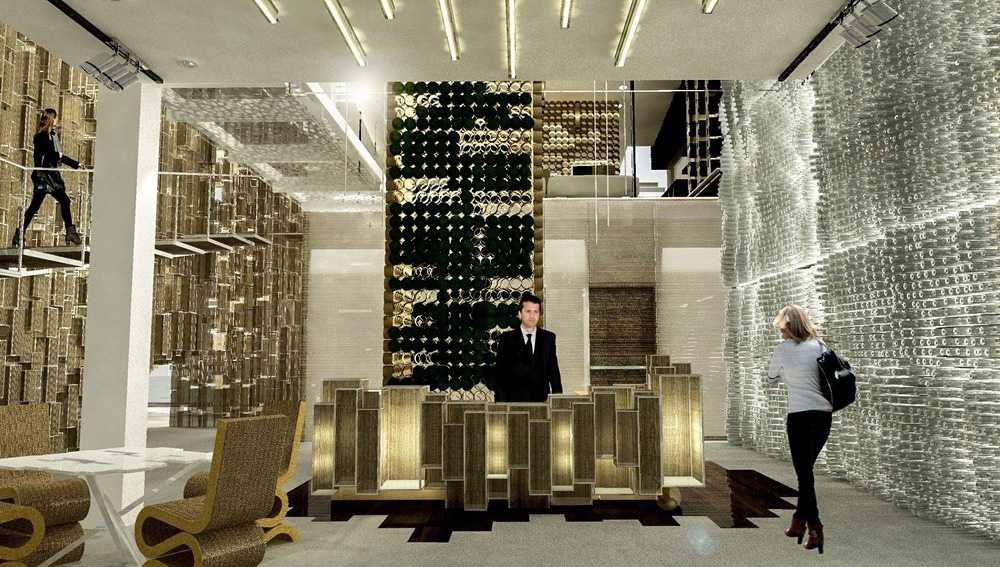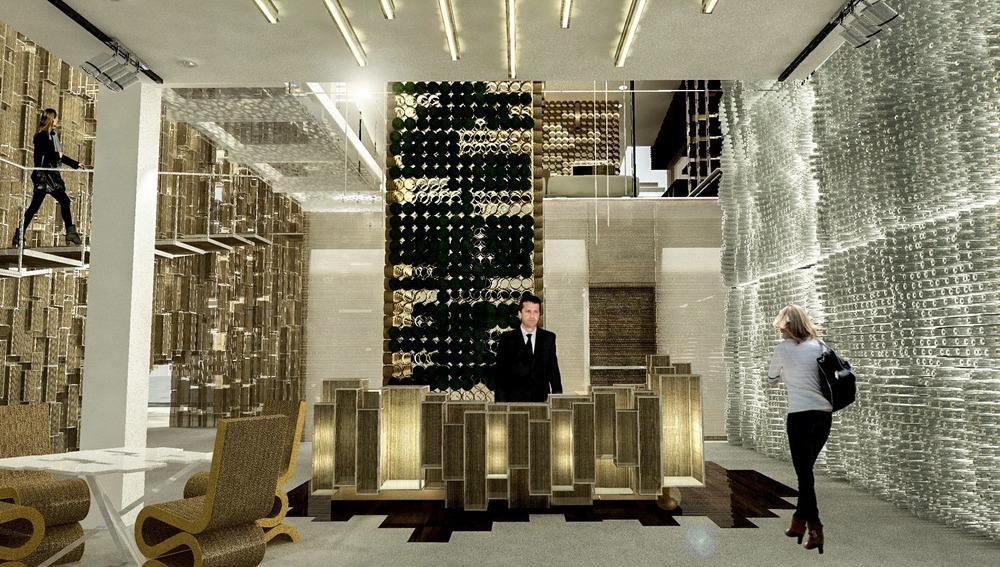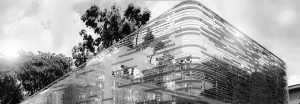Located at Geylang Bahru Industrial Estate in Singapore, an industrial city that has been renovated by the Singapore Urban Development Authority for residential and commercial use.


Retail in Singapore. Cardboard as a structural and illuminating material
An experimental furniture showroom concept using recyclable materials and new technologies presented by the student designer Larry Teo of Temasek Polytechnic in Singapore.

The Interior Architecture graduate created a recycling scheme on a pair of existing warehouse units to convert it into a high-tech recyclable furniture showroom to experiment with the unconventional use of materials such as cardboard, intended as a structural and lighting material, with technologies such as piezoelectric electricity for the collection of anthropogenic energy, which generates a compelling environment in which the space reacts, absorbs and recycles the residual energy produced by its visitors' activities into electricity.

A simple material that is often neglected and abandoned, outlines the project as a paradigm of unconventional exhibition spaces. The material is superimposed as an omnipresent structural and lighting support to assemble a series of distinctive vertically oriented spaces to display the merchandise, accentuating the spatial hegemony within the building's envelope.

Visitors are taken on a journey of ascent through this jungle to be surrounded by the invisible beauty of cardboard, in an off-world retail experience tailored for a sustainable showroom of the future.

This metaphorical jungle, where trees were felled for paper production resulting in a cardboard by-product, has "resurrected", with the full potential of the material's lighting properties.

Natural lighting is optimized through the strategic use of openings on all sides of the building's parameters to visualize the effect of shadows, avoiding excessive artificial lighting in the transient spaces between the "Paper Trees" connecting the first and second levels, filtering direct sunlight through tiny perforations in the material, emulating the effect in jungles and real forests where sunlight reaching the floor and background levels is filtered through a multitude of overhanging canopies.











